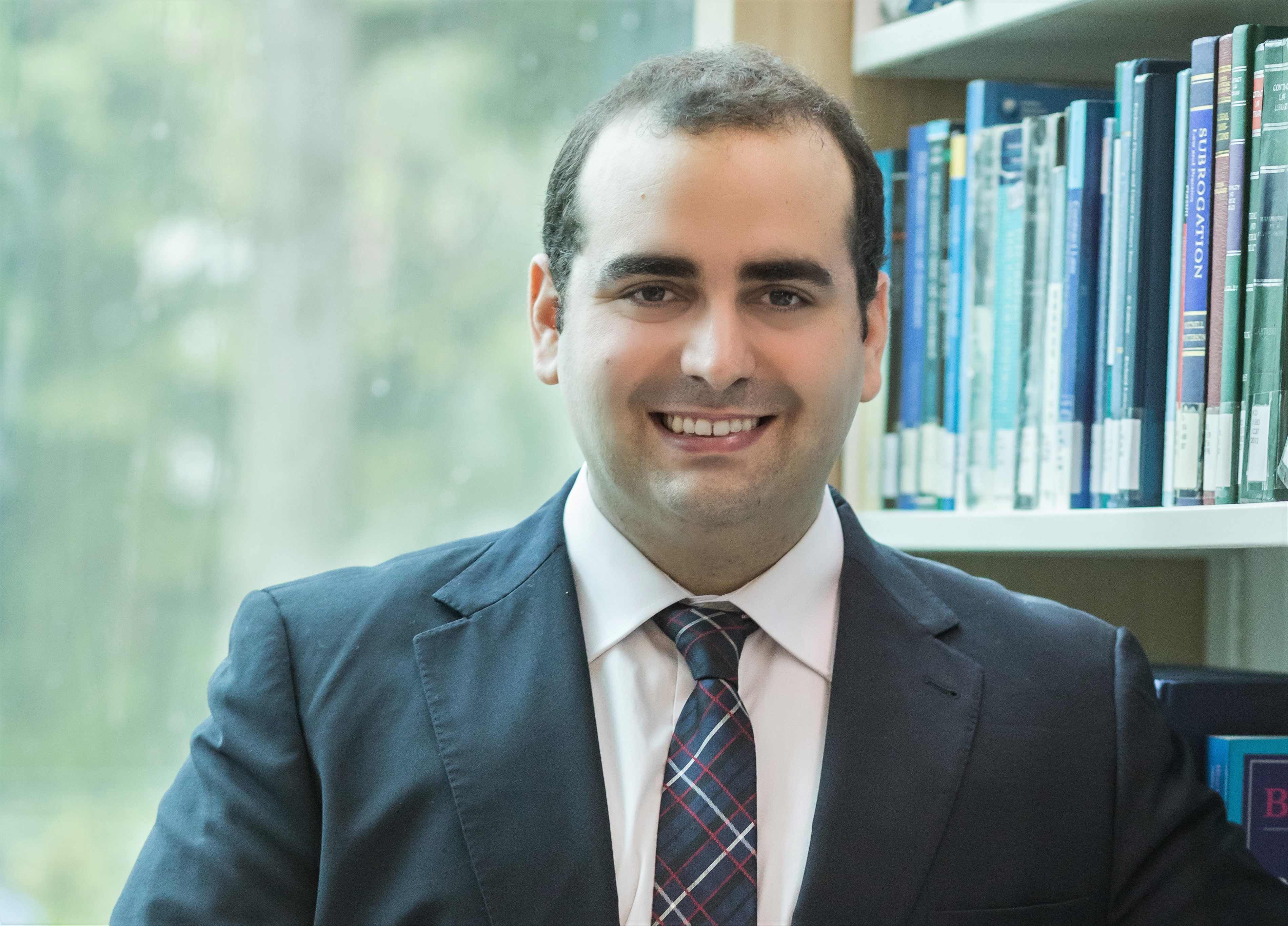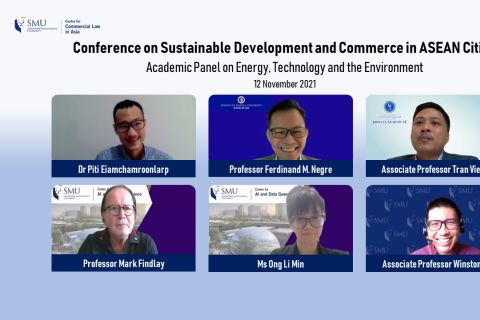
By Jovina Ang
SMU Office of Research & Tech Transfer – Once a creditor-oriented insolvency system, Singapore has transformed itself into an attractive restructuring hub for both debtors and creditors.
To show how Singapore has transformed itself from a traditional pro-creditor insolvency system to becoming an international hub for insolvency restructuring, SMU Assistant Professor of Law Aurelio Gurrea-Martinez, who is one of the recent recipients of the American Bankruptcy Institute’s “40 under 40” awards, has pioneered a novel index that measures the attractiveness of reorganisation procedures from the perspective of three key stakeholders – debtors, secured creditors and general unsecured creditors.
Professor Gurrea-Martinez told the Office of Research & Tech Transfer: “This new index seeks to provide a more accurate assessment of the attractiveness of reorganisation procedures for a particular jurisdiction. Traditionally, a country’s insolvency system is either classified as pro-debtor or pro-creditor. However, this classification is misleading. My index shows how jurisdictions, or different procedures within a jurisdiction, can be pro-debtor and pro-creditor, anti-debtor and anti-creditor, or somewhere in the middle.”
In developing this novel index, Professor Gurrea-Martinez identified a comprehensive list of variables affecting the attractiveness of reorganisation procedures from the perspective of debtors, secured creditors and general unsecured creditors.
While he is finalising a global index that assesses the attractiveness of reorganisation procedures in more than 50 jurisdictions, he has released the result of the index in four of the world’s largest financial centres: the United States, the United Kingdom, Hong Kong and Singapore. This index is included in his recent paper analysing the legal, market and institutional features that, in his view, are needed to build a restructuring hub.
Professor Gurrea-Martinez explained: “There are many benefits associated with having a robust insolvency framework. On one hand, a well-functioning insolvency system can promote entrepreneurship, access to finance and the efficient reallocation of resources in the economy. On the other hand, if an insolvency framework is efficient for both debtors and creditors, it can make a jurisdiction more attractive for lenders and financial services while strengthening its position as a restructuring hub.”
Singapore’s strategy in building a restructuring hub
Professor Gurrea-Martinez then explored how Singapore has become a restructuring hub, identifying three primary pillars contributing to this achievement.
The first pillar consisted of putting in place an attractive business, market and institutional environment. This pillar has been essential for attracting foreign direct investment to drive the country’s economic growth. It has also been foundational for providing investors, especially foreign investors, with predictability, as well as legal recourse in the event of insolvency.
The second pillar was the modernisation of Singapore’s insolvency and restructuring laws. The new legislation adopts many features of the United States’ Chapter 11. As the index developed by Professor Gurrea-Martinez shows, the new insolvency framework adopted in Singapore has significantly enhanced the attractiveness of reorganisation procedures for debtors while remaining protective of the interests of creditors.
The third pillar, identified with strengthening the restructuring ecosystem, was achieved through various projects and initiatives. For example, the Supreme Court of Singapore played an essential role in the enactment of the Guidelines for Communication and Cooperation between Courts in Cross-Border Insolvency Matters, and rolled out the Judicial Insolvency Network (“JIN”) guidelines. The world’s largest organisation of insolvency professionals, INSOL International, opened an office in Singapore in 2019, and it is playing a key role in the development of the restructuring ecosystem.
Another important initiative was the launch of the Singapore Global Restructuring Initiative (SGRI). The SGRI, which was led by Singapore Management University and supported by the Ministry of Law, was launched to promote cutting edge research on restructuring and corporate insolvency law while promoting cooperation among academics, practitioners, judges and policymakers from Singapore and across the world.
Developing the novel index for assessing the attractiveness of the reorganisation procedures
Relying on his novel insolvency index, Professor Gurrea-Martinez then went on to assess the attractiveness of reorganisation procedures in the United States, the United Kingdom, Hong Kong and Singapore, and how the situation evolved from 2000 to 2020. Unlike previous studies, he measured the attractiveness of reorganisation procedures from the perspective of three stakeholders – debtors, secured creditors and general unsecured creditors.
From the perspective of debtors, 20 variables potentially relevant for debtors seeking to conduct debt restructuring have been identified. They include, for example, ability of the managers to remain in possession during the procedure, existence of cramdown and rescue financing provisions, and liability of directors in reorganisation procedures. Each variable has a different weight depending on its importance to debtors. Professor Gurrea-Martinez also assigned a minimum and a maximum score for each variable.
From the perspective of secured creditors, he has identified 17 variables. Examples of these variables include the ability to enforce security interests during reorganisation procedure, or the ranking of secured creditors in the scheme of distribution.
A total of 23 variables have been identified for the general body of unsecured creditors. Examples of these variables include the existence of the best interest of creditor test, the ability of unsecured creditors to make certain decisions in the reorganisation procedures, or the existence of an insolvency practitioner protecting the interest of unsecured creditors.
Applying the novel index to Singapore
When Professor Gurrea-Martinez applied the index to Singapore, he showed that the 2017-2018 reforms have significantly improved the attractiveness of reorganisation procedures for debtors while remaining an attractive jurisdiction for lenders. Namely, the index shows a significant improvement in the score measuring the attractiveness of reorganisation procedures for debtors. In fact, while both the scheme of arrangement and the judicial management procedure have improved significantly, the index shows that the Singapore scheme of arrangement has become one of the most attractive reorganisation procedures in the world.
When it comes to creditors, the index shows that the power of secured creditors has slightly decreased, making the new framework more consistent with those existing in the United States and other leading insolvency jurisdictions. It also shows that the position of general unsecured creditors has improved. Thus, the overall protection of creditors has remained relatively unaffected after the reforms.
Key takeaways
When asked about the key takeaways from his research, Professor Gurrea-Martinez has this to say: “Jurisdictions seeking to build a restructuring hub must address the debtor-creditor dilemma, making sure that the improvement of a restructuring framework for debtors does not undermine the position of creditors. Otherwise an insolvency reform may end up doing more harm than good for the real economy.”
He continued: “The other steps needed for becoming a restructuring hub include the existence of a sophisticated judiciary and the development of a restructuring ecosystem. Additionally, jurisdictions need to consider other external factors such as international recognition of the reorganisation procedures, and the reputation and credibility of the country.”
Back to Research@SMU Feb 2022 Issue
See More News
Want to see more of SMU Research?
Sign up for Research@SMU e-newslettter to know more about our research and research-related events!
If you would like to remove yourself from all our mailing list, please visit https://eservices.smu.edu.sg/internet/DNC/Default.aspx

